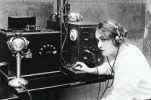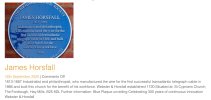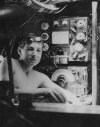Telegraphists used telegraphic equipment to communicate over the airwaves. There are few nowadays as telegraphs have been replaced by other methods including radio and satellite. One role was transmitting signals from ships, between locations on land, and in military conflicts. They were also employed in companies that sent telegraphs on demand from customers - these were ‘telegrams’. Members of the public could compose and send messages, charged per line as well as receive messages. Telegrams were a form of quick communication before personal phones, radio signals, the Internet, and other communication media.
The telegraphist needed to be able to listen to and interpret incoming messages, convert telegraph code into meaningful text to relay to the intended recipient. They also needed to encode and send messages out.
The standard language used by telegraphists was Morse Code, or in the military, cryptography to send messages securely. The telegraphist used a ‘telegraph key’ to send signals down a wired telegraph system or over a wireless radio network.
(Source: extracted and adapted from PracticalAdultInsights)
 Source: British Newspaper Archive
Source: British Newspaper Archive
The telegraphist needed to be able to listen to and interpret incoming messages, convert telegraph code into meaningful text to relay to the intended recipient. They also needed to encode and send messages out.
The standard language used by telegraphists was Morse Code, or in the military, cryptography to send messages securely. The telegraphist used a ‘telegraph key’ to send signals down a wired telegraph system or over a wireless radio network.
(Source: extracted and adapted from PracticalAdultInsights)
 Source: British Newspaper Archive
Source: British Newspaper Archive 














